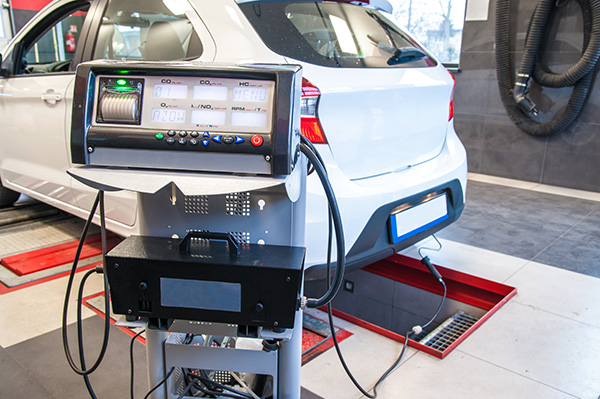
Failing an emission test can be a frustrating experience for any vehicle owner. It not only prevents you from legally driving your car but also indicates potential underlying issues that could affect your vehicle's performance and the environment. Repairing your vehicle after a failed emission test is entirely manageable with the right knowledge and professional assistance. We will explain the common reasons for emission test failures, the repair process, and how to ensure your vehicle passes on the next attempt.
Understanding Emission Test Failures
Emission tests are designed to measure the pollutants released by your vehicle's exhaust system. These tests ensure that cars meet the environmental standards set by regulatory bodies to minimize air pollution. A failed emission test indicates that your vehicle is emitting more pollutants than allowed, which can be caused by various issues, ranging from minor problems to significant mechanical failures.
Common Reasons for Emission Test Failures
Faulty Oxygen Sensors
Oxygen sensors monitor the levels of oxygen in the exhaust gasses and help regulate the air-fuel mixture. When these sensors fail, they can cause an incorrect fuel mixture, leading to higher emissions.
Malfunctioning Catalytic Converter
The catalytic converter is responsible for reducing harmful emissions by converting toxic gasses into less harmful substances. A malfunctioning catalytic converter can result in increased emissions and a failed test.
Worn-Out Spark Plugs
Spark plugs are crucial for the combustion process. If they are worn out or faulty, they can cause incomplete combustion, resulting in higher emissions.
Evaporative Emission Control (EVAP) System Issues
The EVAP system prevents fuel vapors from escaping into the atmosphere. Leaks or malfunctions in this system can lead to increased emissions.
Leaking Exhaust System
Any leaks in the exhaust system can allow unfiltered exhaust gasses to escape, leading to higher emissions and a failed test.
The Repair Process
When your vehicle fails an emission test, the first step is to diagnose the underlying issues accurately. Here's how the repair process typically unfolds:
Comprehensive Diagnostic Check
A professional technician will use diagnostic tools to identify the specific reasons for the failed emission test. This step involves reading error codes from the vehicle's onboard diagnostic (OBD) system and conducting a visual inspection.
Repair or Replace Faulty Components
Based on the diagnostic results, the technician will repair or replace the faulty components. This could include replacing oxygen sensors, repairing the catalytic converter, installing new spark plugs, fixing EVAP system leaks, or addressing any exhaust system issues.
Retesting the Vehicle
After the necessary repairs are made, the technician will conduct a pre-test to ensure the issues have been resolved. If everything looks good, the vehicle will be retested for emissions.
Verification of Repairs
Once the vehicle passes the emission test, the technician will provide a detailed report of the repairs performed. This report is essential for verifying that the necessary repairs were made to bring the vehicle into compliance.
Preventative Measures to Avoid Future Failures
To avoid the hassle of failing an emission test again, regular maintenance and proactive care are crucial. Here are some tips to keep your vehicle in top shape and ensure it passes future emission tests:
- Regular Maintenance: Follow your vehicle manufacturer's recommended maintenance schedule. Regular oil changes, air filter replacements, and engine tune-ups can help keep your car running efficiently.
- Use Quality Fuel: Opt for high-quality fuel and consider using fuel additives that help clean the fuel system and reduce emissions.
- Monitor Dashboard Warning Lights: Pay attention to any warning lights on your dashboard, especially the check engine light. Address any issues promptly to prevent them from worsening.
- Drive Your Vehicle Regularly: Short trips and extended periods of inactivity can cause issues with your vehicle's emission system. Regular driving helps keep the system functioning correctly.
- Professional Inspections: Have your vehicle inspected by a professional technician regularly. They can identify potential problems early and recommend preventive measures.
If your vehicle has failed an emission test, don't wait! Visit Leroy's Auto & Truck Care for a comprehensive diagnostic check and expert repairs. Our skilled technicians will ensure your car meets all environmental standards.